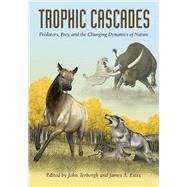- ISBN: 9781597264877 | 1597264873
- Cover: Paperback
- Copyright: 4/20/2010
Trophic cascades-the top-down regulation of ecosystems by predators-are an essential aspect of ecosystem function and well-being. Trophic cascades are often drastically disrupted by human interventions-for example, when wolves and cougars are removed, allowing deer and beaver to become destructive-yet have only recently begun to be considered in the development of conservation and management strategies. Trophic Cascadesis the first comprehensive presentation of the science on this subject. It brings together some of the world's leading scientists and researchers to explain the importance of large animals in regulating ecosystems, and to relate that scientific knowledge to practical conservation. Chapters examine trophic cascades across the world's major biomes, including intertidal habitats, coastal oceans, lakes, nearshore ecosystems, open oceans, tropical forests, boreal and temperate ecosystems, low arctic scrubland, savannas, and islands. Additional chapters consider aboveground/belowground linkages, predation and ecosystem processes, consumer control by megafauna and fire, and alternative states in ecosystems. An introductory chapter offers a concise overview of trophic cascades, while concluding chapters consider theoretical perspectives and comparative issues. Trophic Cascadesprovides a scientific basis and justification for the idea that large predators and top-down forcing must be considered in conservation strategies, alongside factors such as habitat preservation and invasive species. It is a groundbreaking work for scientists and managers involved with biodiversity conservation and protection.







